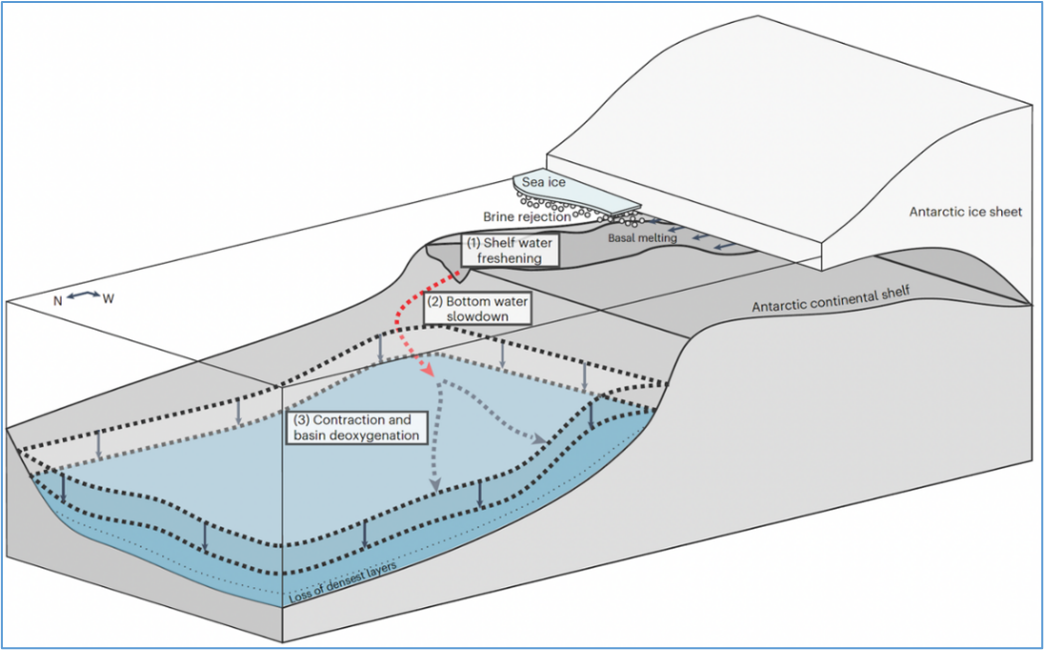PREVIOUS
Deep ocean currents in Antarctica
June 3 , 2023
890 days
1099
0
- Antarctica drives a global network of ocean currents called the “overturning circulation” that redistributes heat, carbon and nutrients around the globe.
- The overturning is crucial to keeping the earth’s climate stable.
- It’s also the main way oxygen reaches the deep ocean.
- Recent measurements show the overturning circulation has slowed by almost a third (30%) and deep ocean oxygen levels are declining.
- This is happening even earlier than climate models predicted.
- As the flow of bottom water slows, the supply of oxygen to the deep ocean declines.
- The shrinking oxygen-rich bottom water layer is then replaced by warmer waters that are lower in oxygen, further reducing oxygen levels.
- Ocean animals, large and small, respond to even small changes in oxygen.
- Deep-ocean animals are adapted to low oxygen conditions but still have to breathe.
- Losses of oxygen may cause them to seek refuge in other regions or adapt their behaviour.

Leave a Reply
Your Comment is awaiting moderation.


